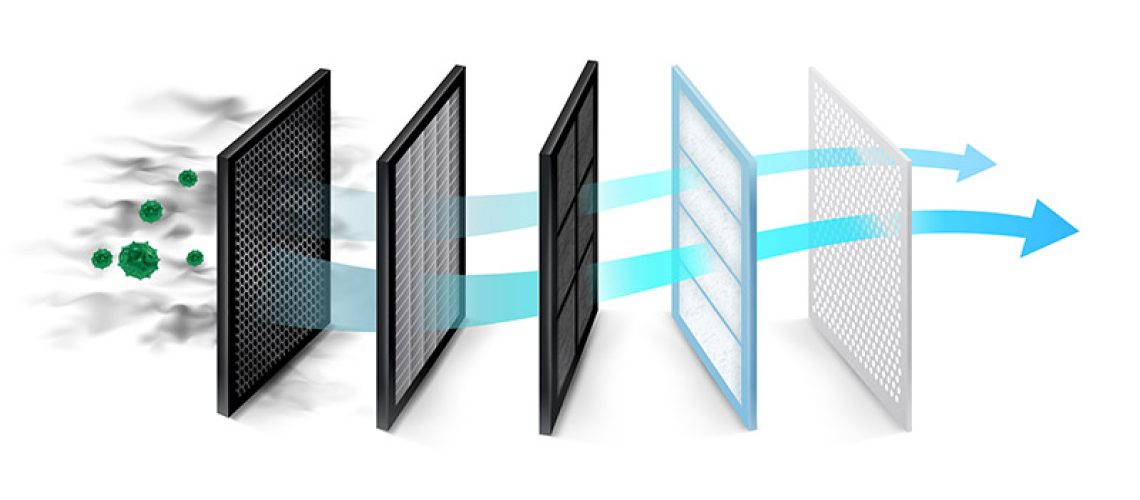Different air filters are available in various sizes, materials, and price ranges.
Flat-panel: Traditionally the most economical air filter, flat-panel versions contain fibers spread across a structure, most often fiberglass. They are disposable and simple to install. However, they can not be of the best quality, letting many particles through.
Pleated: To filter airborne particles, disposable pleated filters use wide screens made of cotton or plastic fibers. They feature pleats, in contrast to their flat-panel relatives, which gives the filter greater surface area for filtering and increases the amount of debris it can capture. Compared to flat-panel filters, the price is a little greater.
Electrostatic: To capture more tiny particles like smoke, pollen, or germs inside their screens, certain air filters are electrostatically charged. They come in flat or pleated varieties, washable or disposable.
Washable or reusable filter: Available in flat-panel and pleated styles. To get rid of any particle accumulation, they may be vacuumed or hosed down with water. There is a little drawback, particularly if you use an electrostatically charged filter, but they are more environmentally friendly than disposable filters. According to Scott Blackwell, Lowe’s merchandising vice president of rough plumbing and electrical, “reusable filters will lose their electrostatic charge over time, which causes the filter to lose its capacity to absorb tiny particles.” Therefore, even washable filters have a lifespan, which is typically a few years.
High-efficiency particulate air (HEPA): Any filter that regularly eliminates at least 99.97 percent of airborne particles that are 0.3 microns in size is given the moniker “HEPA.” It is a book that the Energy Department recommends. They may be used in homes when individuals have allergies or have weak immune systems. At the same time, they are most often employed in business environments that need spotless air, such as hospitals and labs. However, not all HVAC systems are built to withstand very thick HEPA filters.
What Does Each Of Those Numbers Mean?
The ability of each air filter to filter out airborne debris is given a rating. The American Society of Heating, Refrigerating, and Air-Conditioning Engineers created the Minimum Efficiency Reporting Value (MERV), a scale from one to sixteen that serves as the industry standard. It denotes weaker filters with lower numbers and stronger ones with higher values. The Filter Performance Grading from Home Depot and the Microparticle Performance Rating from 3M are two examples of companies that have developed their rating schemes.
The Federal Trade Commission and the Environmental Protection Agency-recognized Clean Air Delivery Rate (CADR) scale is another grading system that assesses air purifier effectiveness. Higher values correlate with greater overall performance in particle removal, much with MERV. Although certain high-performance filters may reach 1,200 CADR, most filters lie between the 12 CADR to 240 CADR range.
What Is The Best Air Filter To Use In My House?
Determine the particular requirements of the people living in your house first. These requirements should be directly related to your air filters’ CADR or MERV ratings.
According to Carrino, families that have pets, suffer from allergies, deal with a lot of dust, or wish to catch airborne microorganisms should go for filters with a higher CADR rating. The same idea holds for MERV ratings: By using a higher MERV rating filter, you may reduce the number of particles and allergens entering your home’s air.
However, use caution while using your filters. Some HVAC systems are not powerful enough to force air through more constrictive filters that block the tiniest particles, i.e., options with higher CADR or MERV ratings, which might lower airflow and result in less effective heating and cooling of your house. An HVAC system’s hardware may get damaged by overuse, necessitating a costly repair. To find out how powerful your model is, consult the handbook for your HVAC system or contact an HVAC specialist.
You may take your budget into account after you’ve determined the rating range you want. On average, disposable fiberglass filters start at about $5 and are the least expensive upfront; washable filters start at $9 but may cost less overall.
The amount and thickness of the filters you require will depend on the size and thickness of your ventilation apertures and the areas your HVAC system is serving. (Remember that thickness and CADR or MERV ratings are not connected.)

